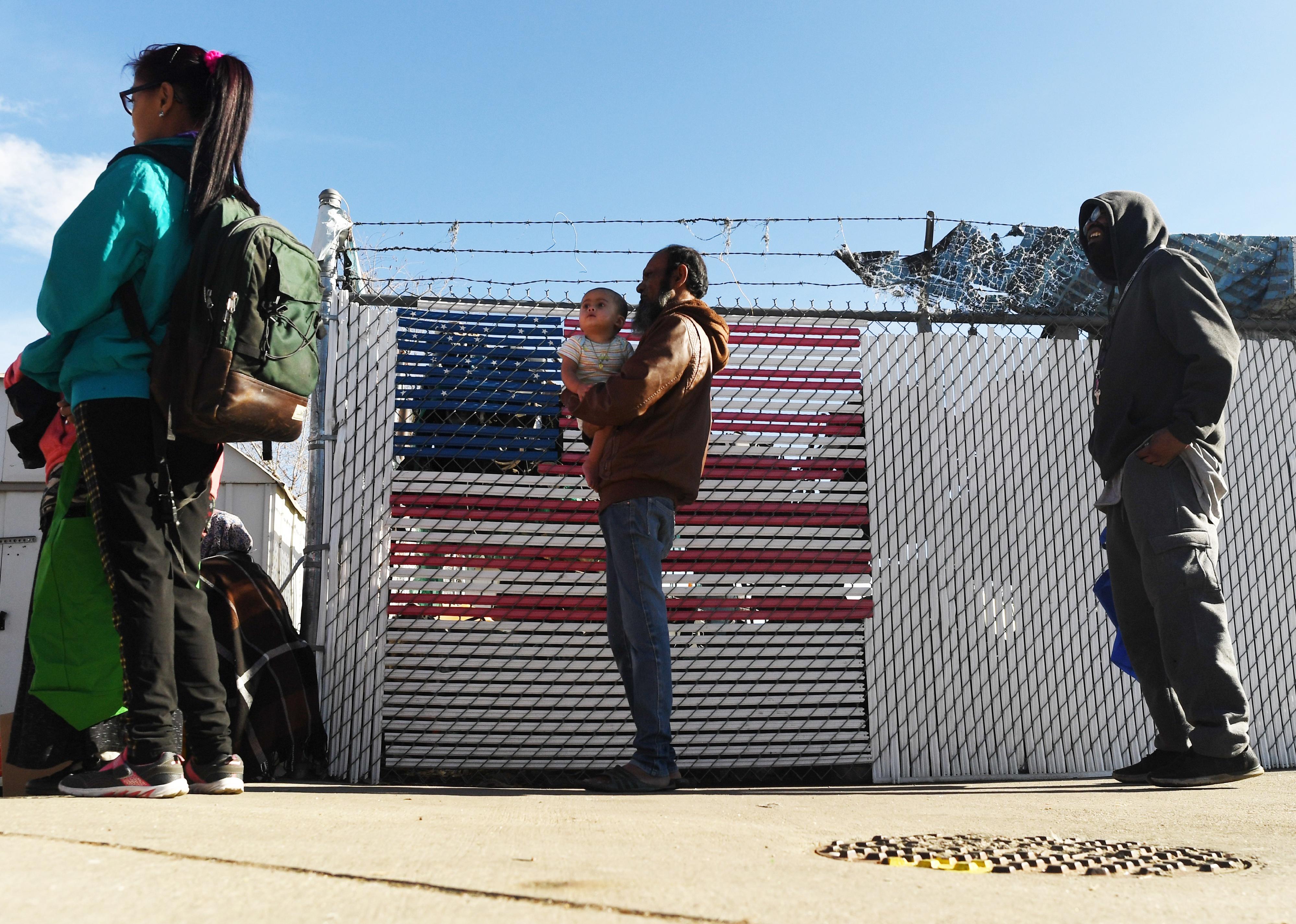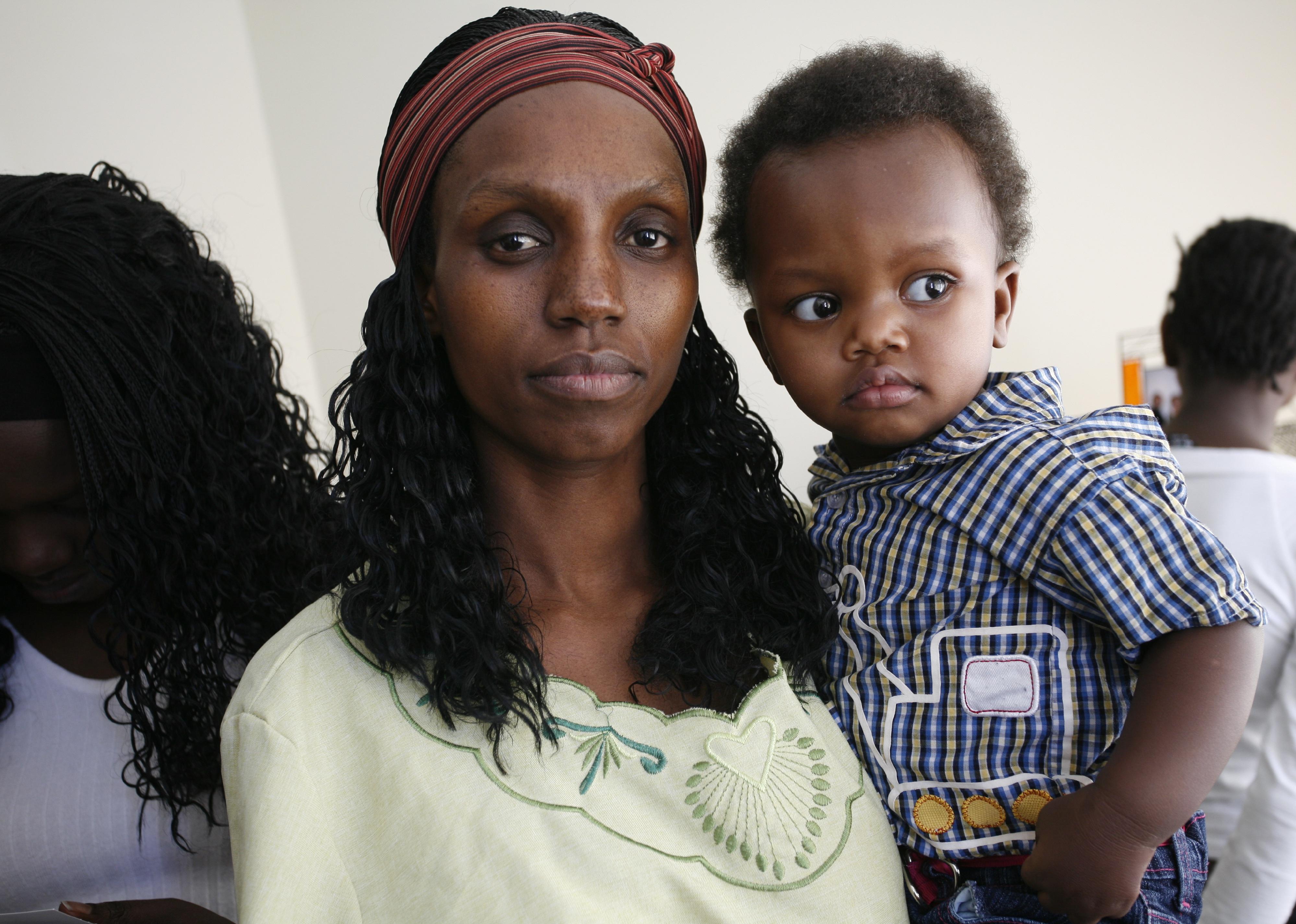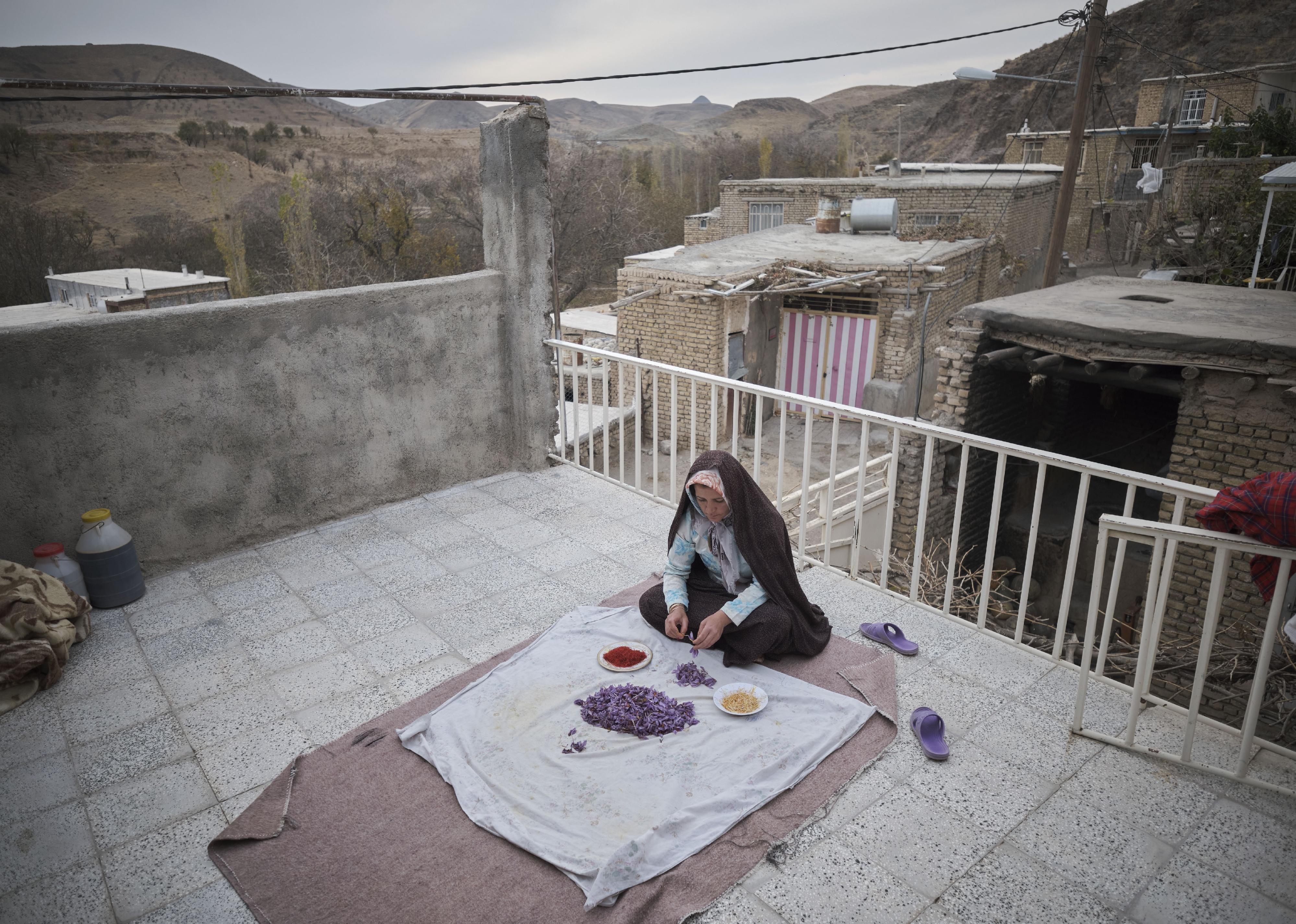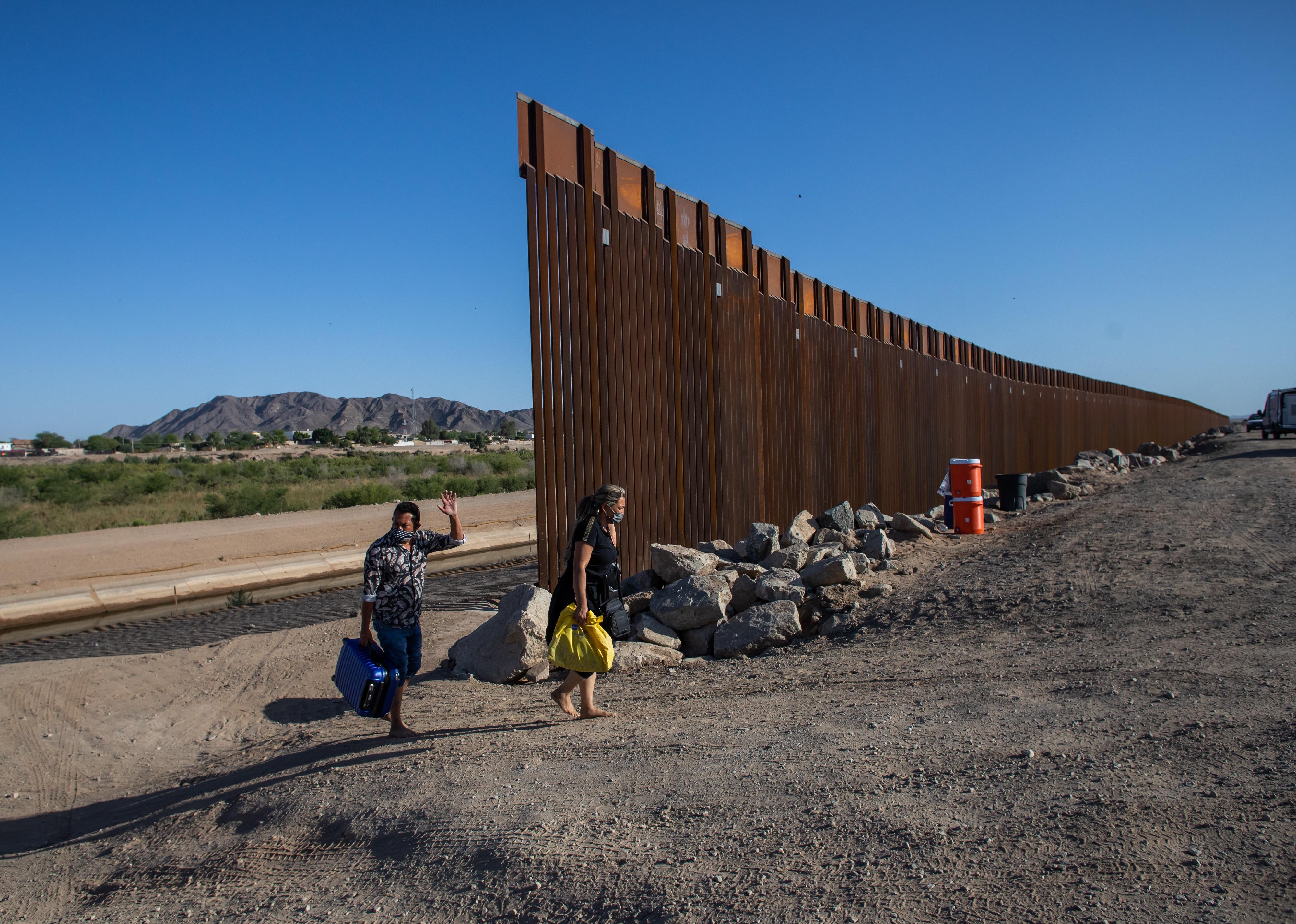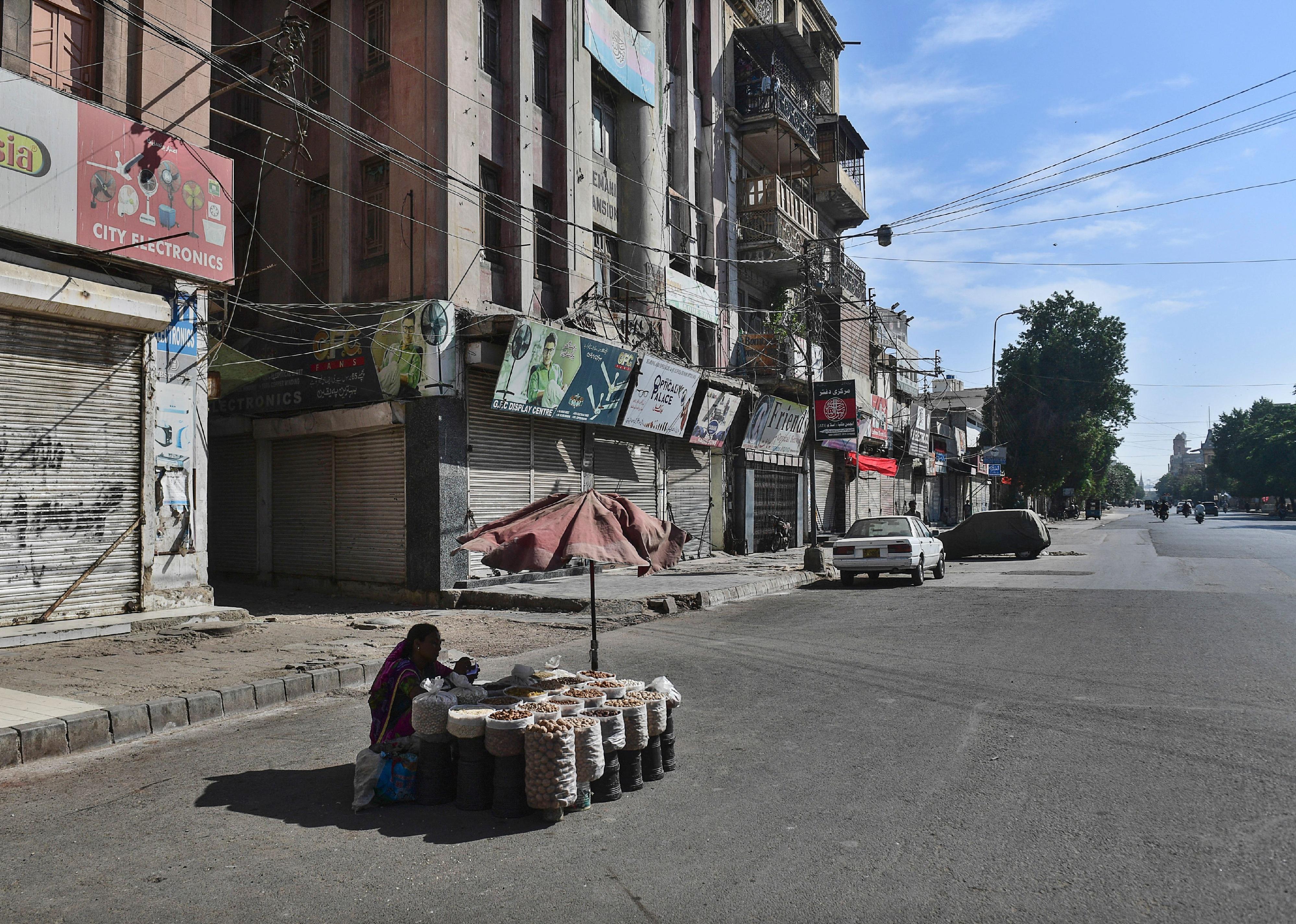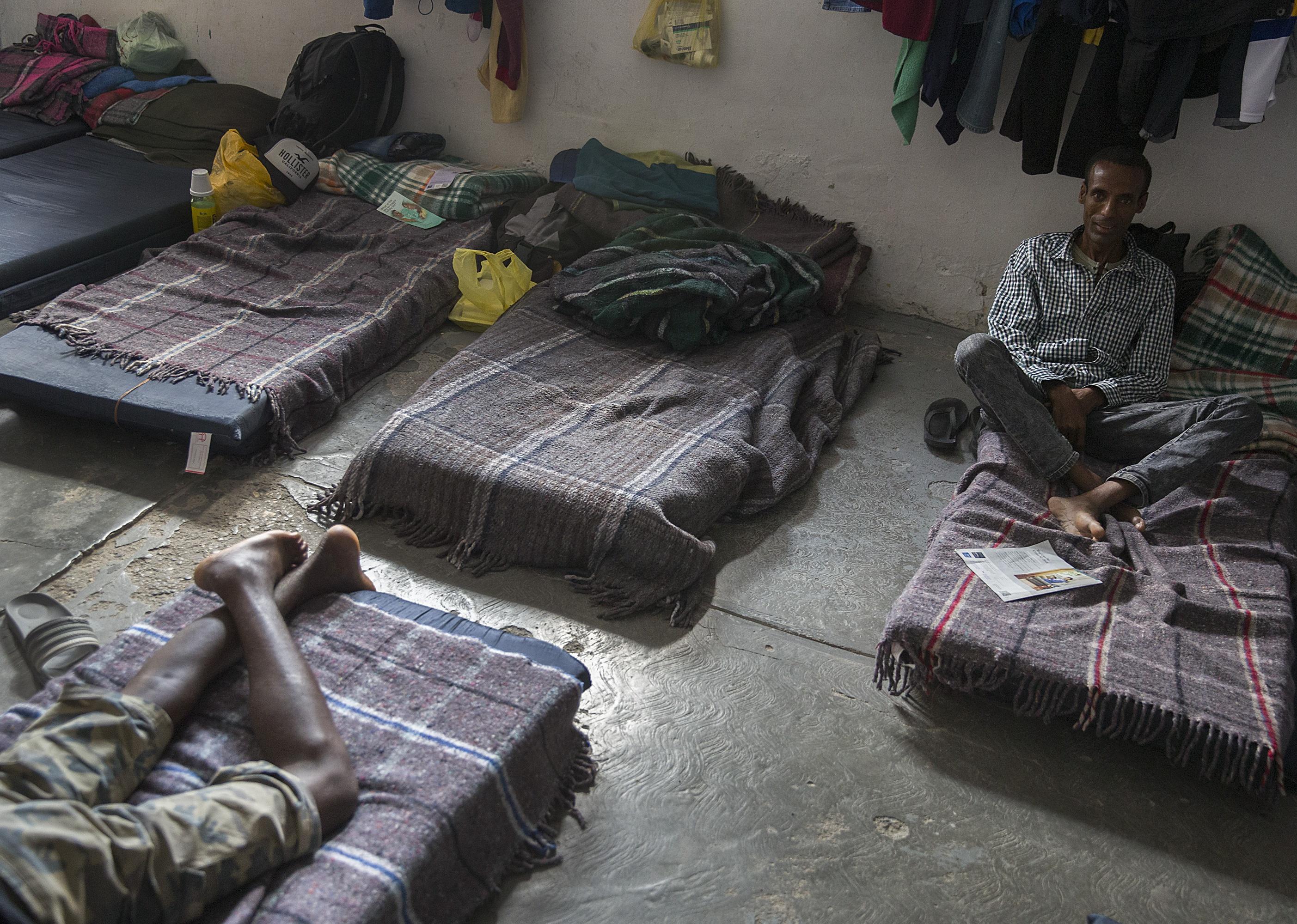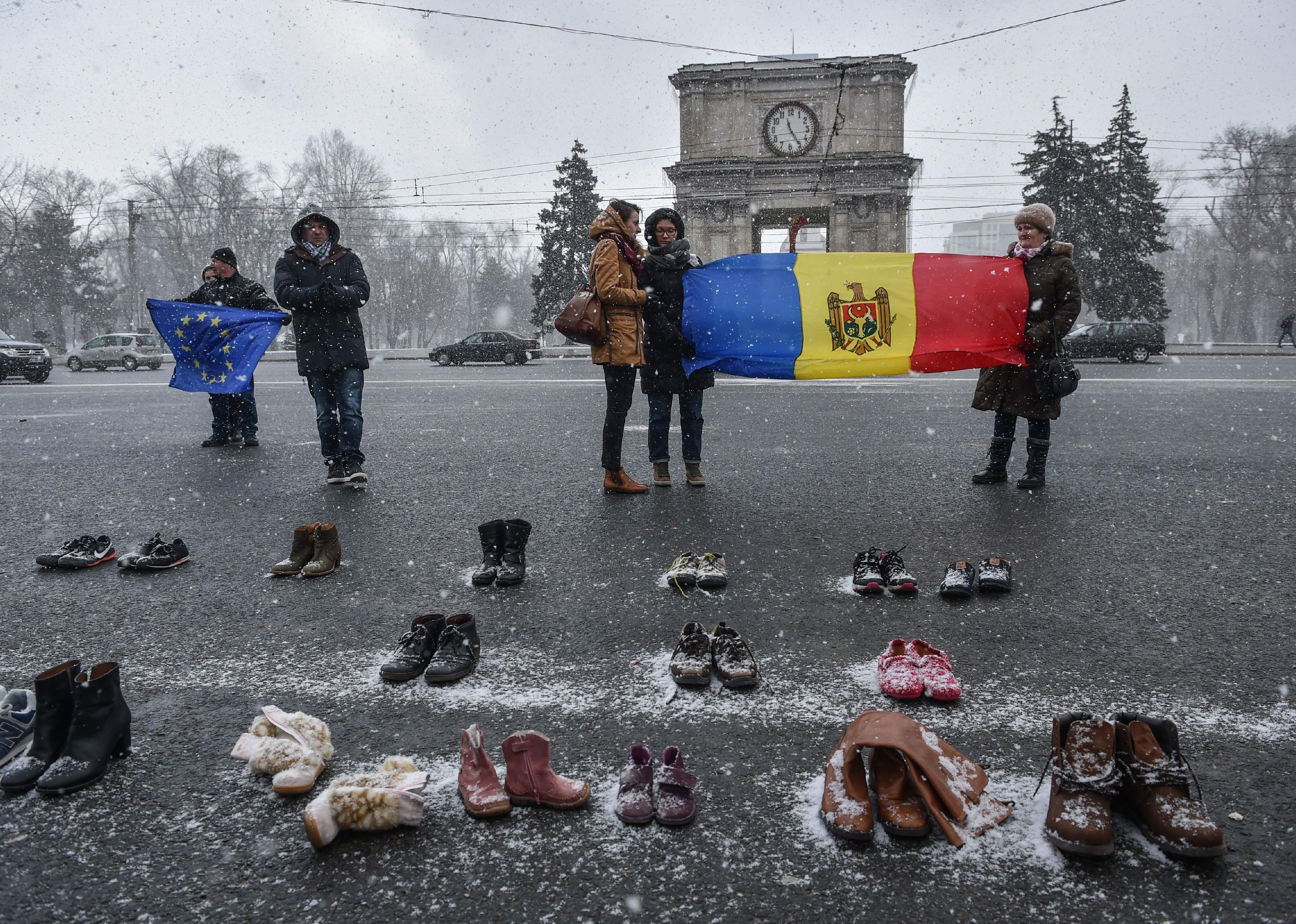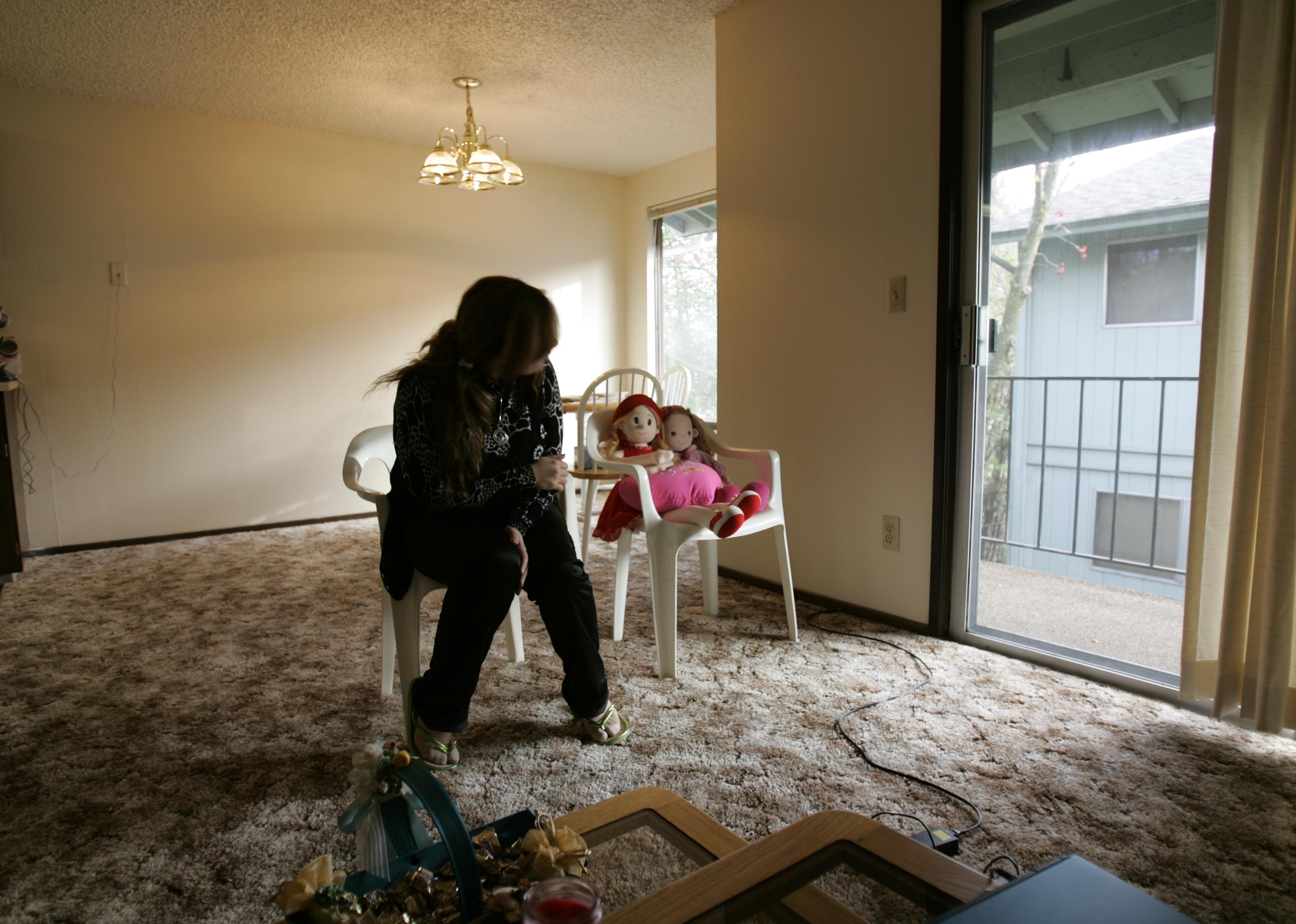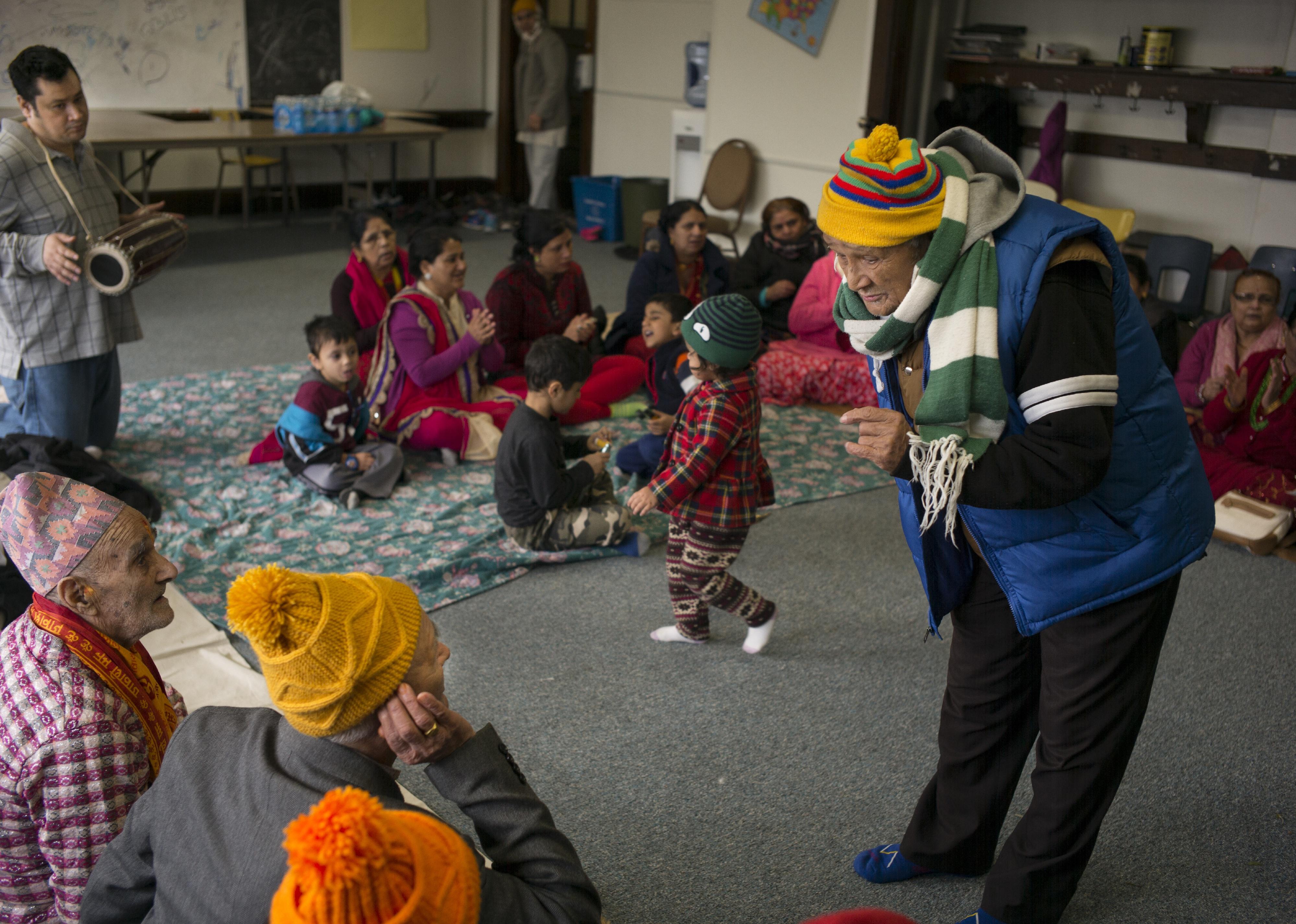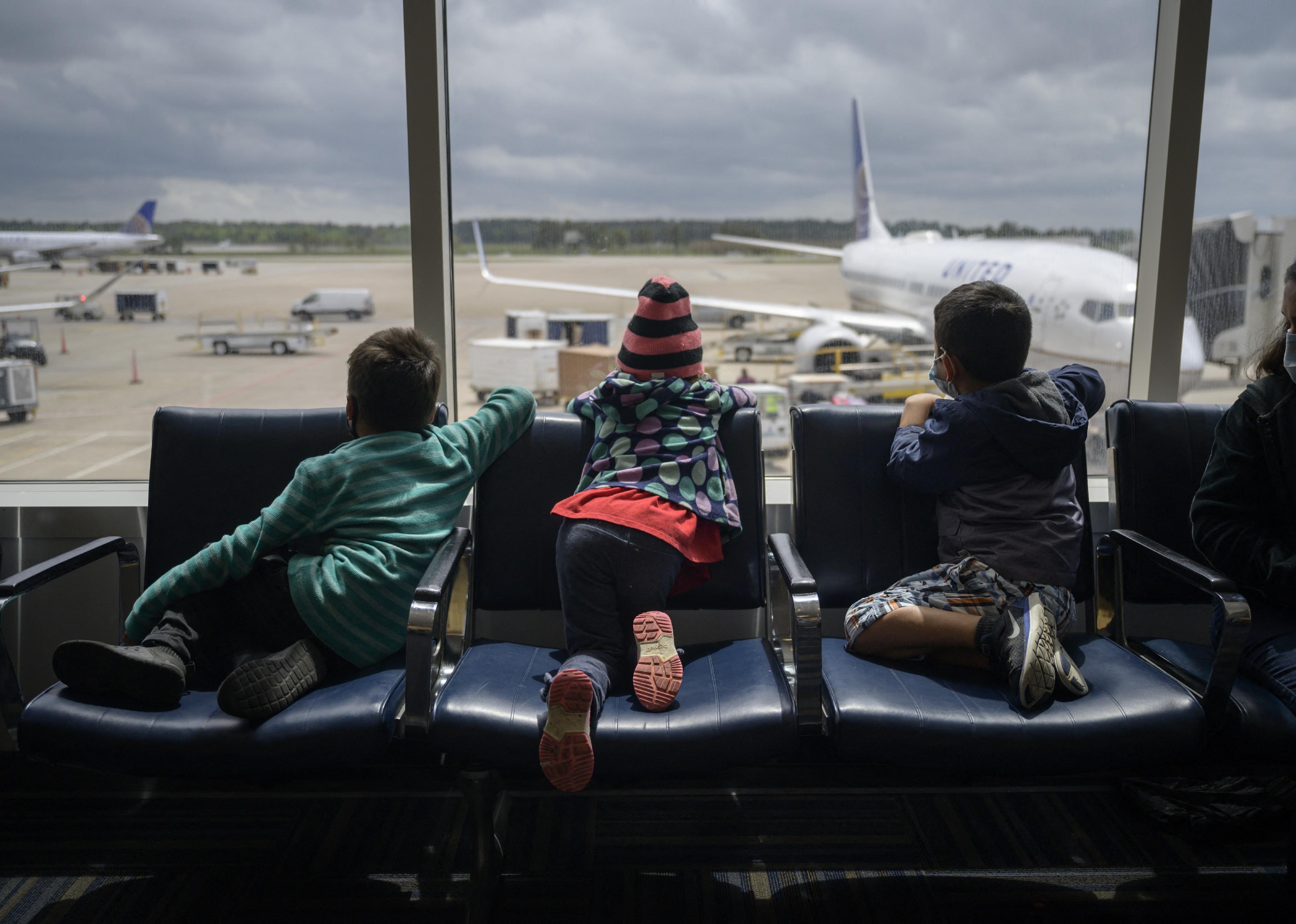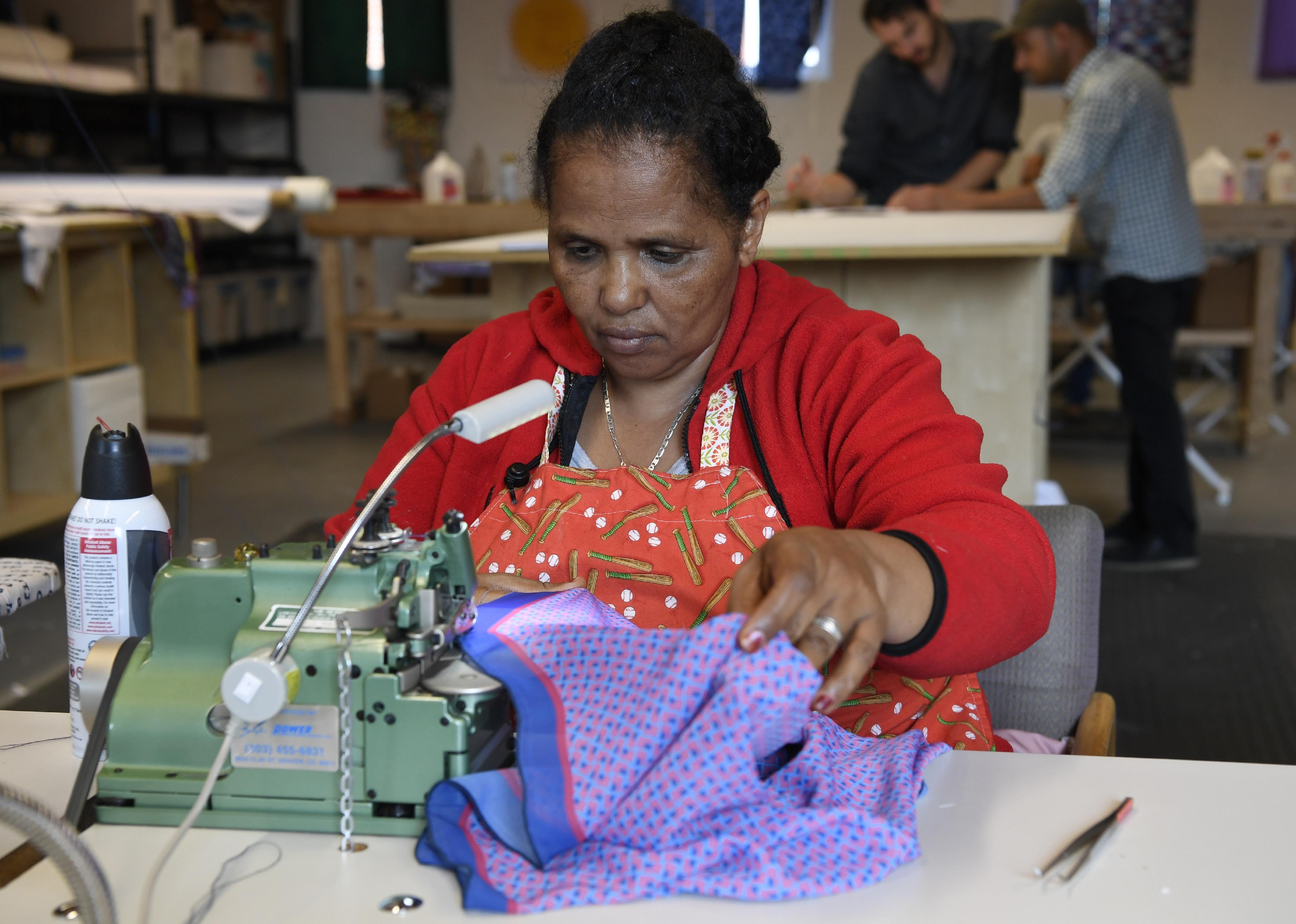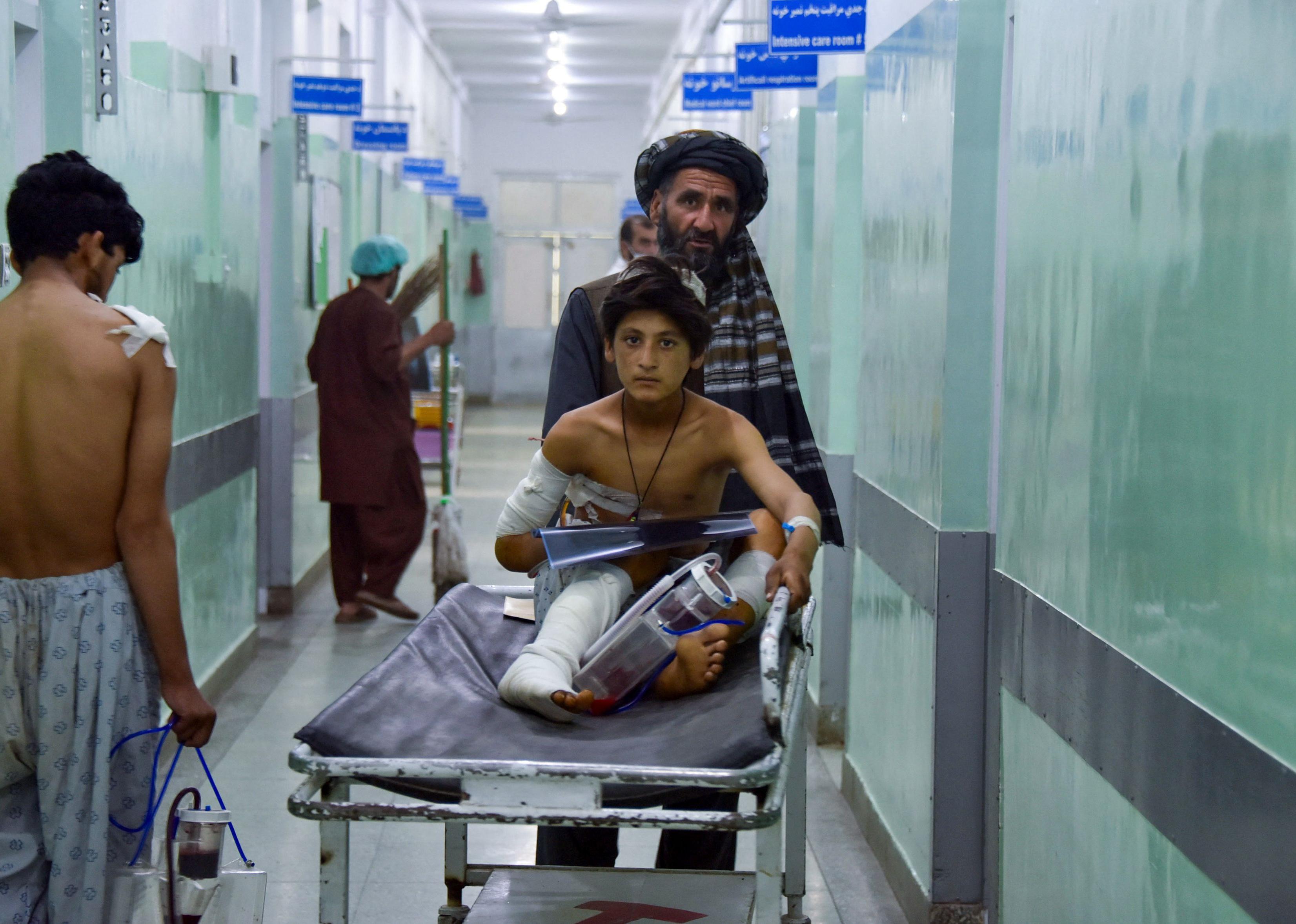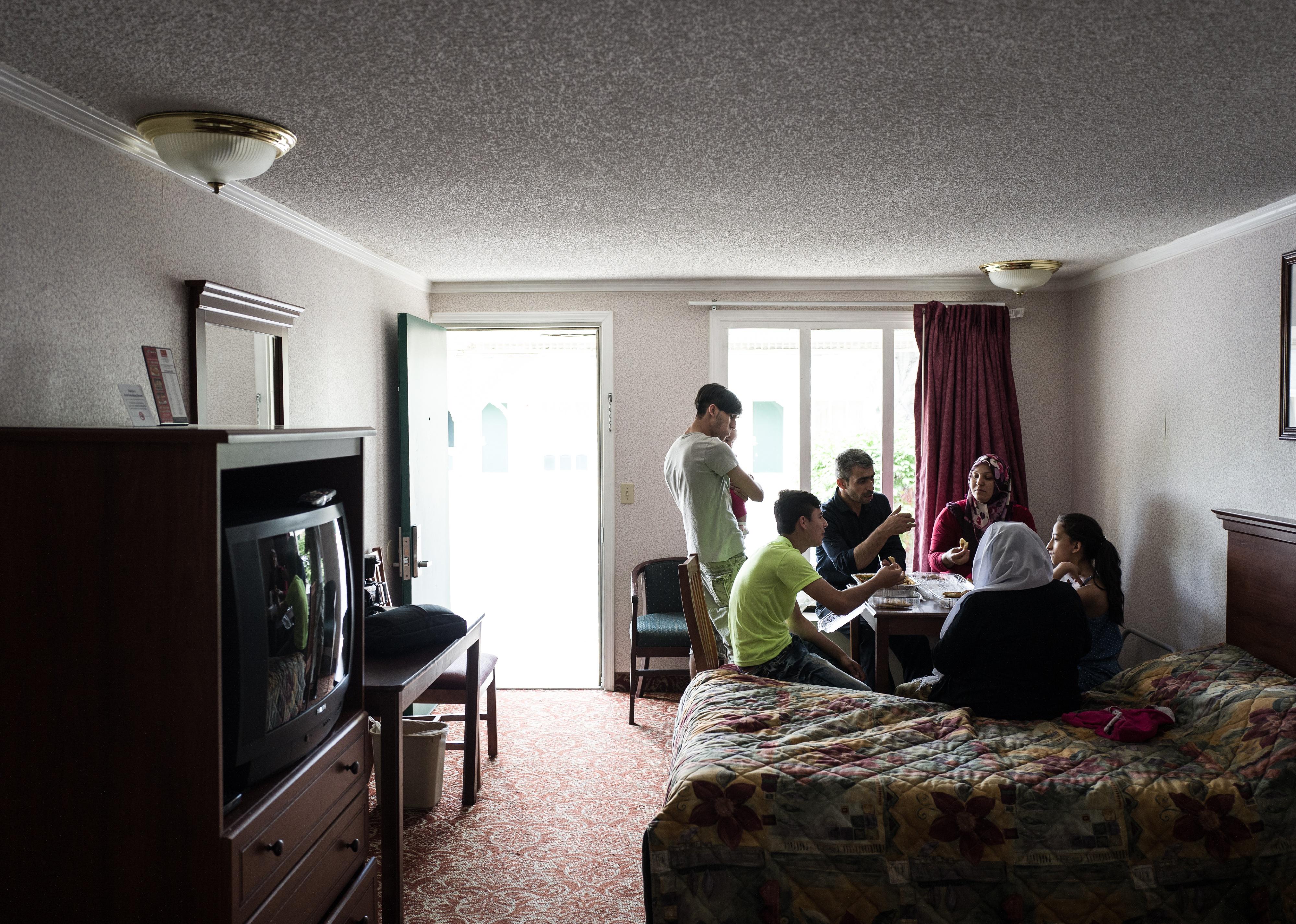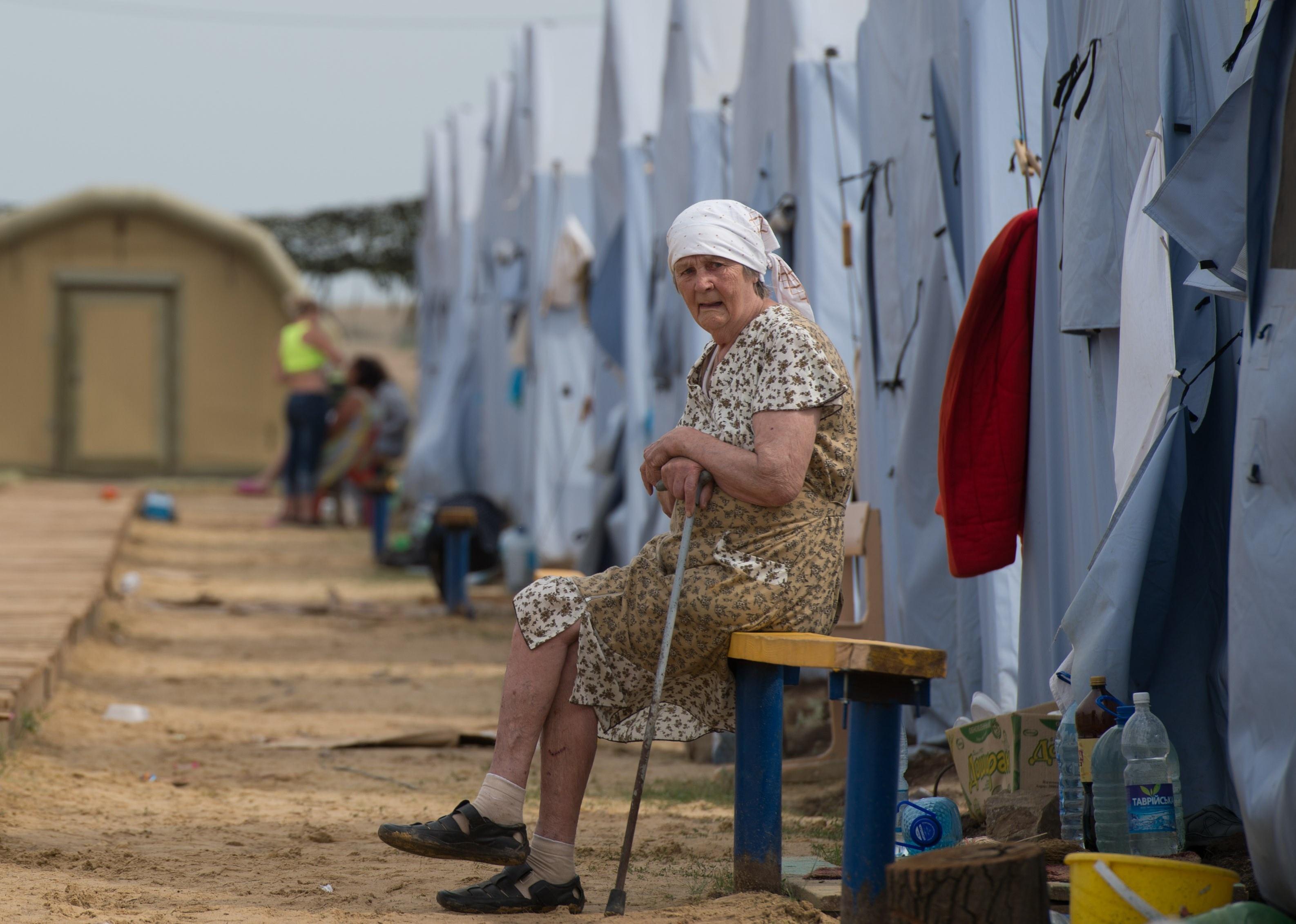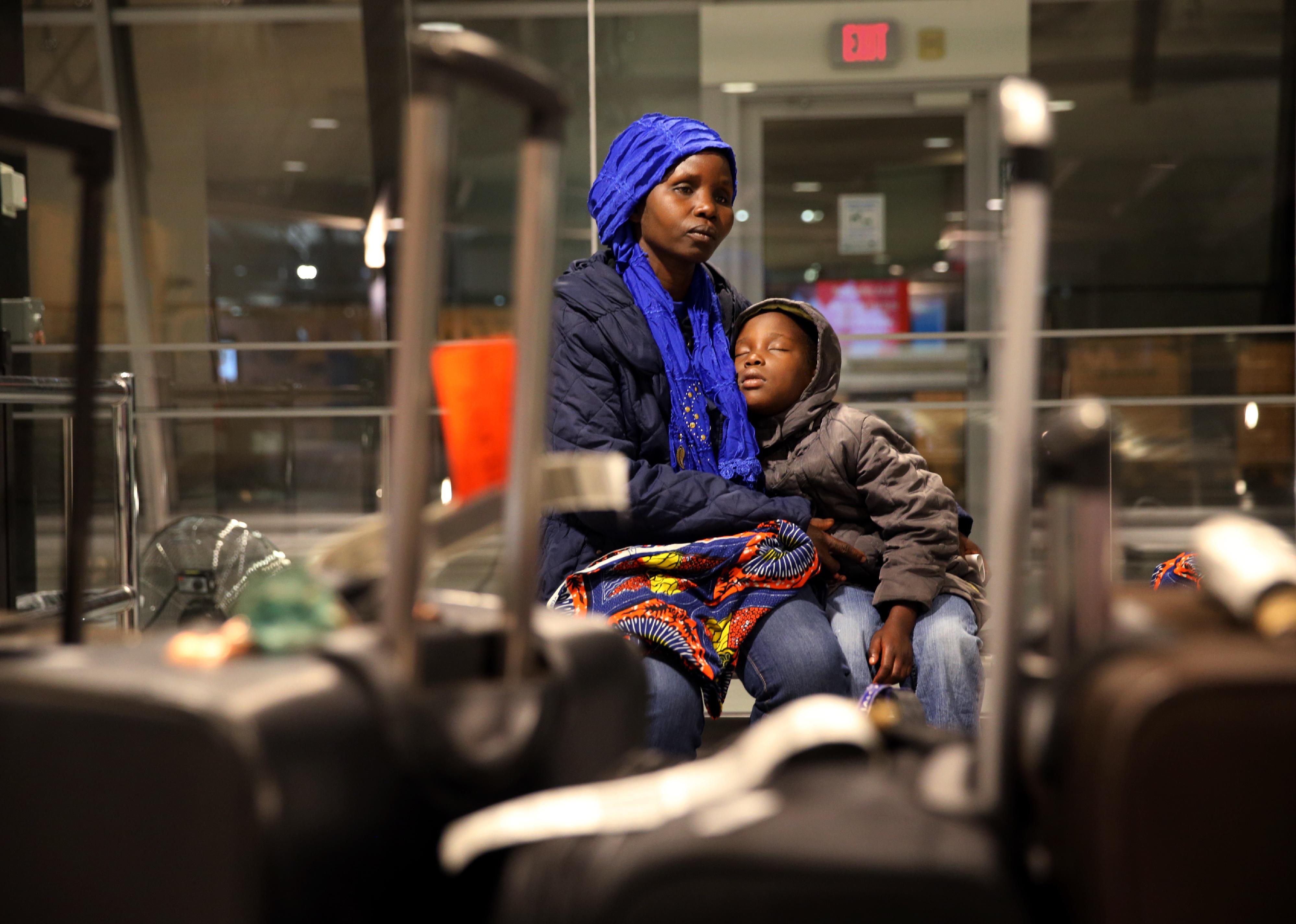Where refugees to the US come from and why
The Denver Post // Getty Images
Where refugees to the US come from and why
In 2022, for the first time in history, the number of refugees worldwide reached more than 100 million people. Millions of people are fleeing violence, persecution, and economic instability, and attempting to start a new life in a more tolerant and secure country. Recognizing this global issue, the Biden administration has agreed to accept up to 125,000 refugees during the 2023 fiscal year. The White House set the same acceptance parameter for FY 2022, which ended on Sept. 30, 2022; however, only 25,465 refugees were admitted, falling 80% short of the administration’s target.
The remarkable discrepancy between the U.S.’ ambitions for refugee resettlement and the reality of what it managed to achieve can be attributed to several factors, among them the continued struggle to bolster the nation’s refugee program after its diminishment under the Trump administration, a need for additional personnel at overseas processing centers, and old-fashioned political bureaucracy.
How exactly is an individual classified as a “refugee?” The Department of Homeland Security defines a refugee as “a person outside his or her country of nationality who is unable or unwilling to return to his or her country of nationality because of persecution or a well-founded fear of persecution on account of race, religion, nationality, membership in a particular social group, or political opinion.” Refugees are not to be confused with individuals seeking asylum— or asylees—who meet the definition of a refugee but who are also already present in the United States or at a U.S. port of entry.
To find where refugees to the U.S. come from, Stacker utilized data from the Refugee Processing Center, operated by the Department of State. Countries were ranked by total refugee acceptance from 2017 to Nov. 30, 2022. Read on for a better understanding of why these individuals are seeking a new start in America.
You may also like: Baby names that are illegal around the world
![]()
FRED DUFOUR // Getty Images
#20. Central African Republic
– Total refugees accepted since 2017: 682
— 2017: 148
— 2018: 244 (64.9% increase)
— 2019: 85 (65.2% decrease)
— 2020: 22 (74.1% decrease)
— 2021: 181 (722.7% increase)
— 2022 (as of November 30): 2
A country roughly the size of Texas, the Central African Republic has seen 1.9 million of its citizens—over one-third of the total population—displaced from their homes. Poverty and unrest have been issues in the area for years, but the December 2020 elections have only made things worse, igniting a civil war between rebel factions and those who hold political power. Though several outside groups, including the United Nations peacekeepers, have attempted to intervene, there appears to be no end to the conflict and the resulting instability in sight, meaning refugee numbers are likely to increase. It is estimated that at present, 63% of the country’s population is in need of humanitarian aid.
Christophe Calais // Getty Images
#19. Burundi
– Total refugees accepted since 2017: 772
— 2017: 201
— 2018: 196 (2.5% decrease)
— 2019: 46 (76.5% decrease)
— 2020: 124 (169.6% increase)
— 2021: 185 (49.2% increase)
— 2022 (as of November 30): 20
While the worst of the violence in Burundi—which stemmed from the Tutsi and Hutu conflict— has passed, the effects of years of fighting are still felt by the country’s citizens, particularly in food insecurity, economic decline, and disease outbreak. While many of the refugees have traveled to nearby countries, including Rwanda, Tanzania, and the Democratic Republic of Congo, the unrest in those countries means that many are looking for other, more stable, places to settle permanently. Since September 2017, more than 185,000 Burundi refugees have been repatriated back to their home nation, due to unrest in nations where they had attempted to relocate.
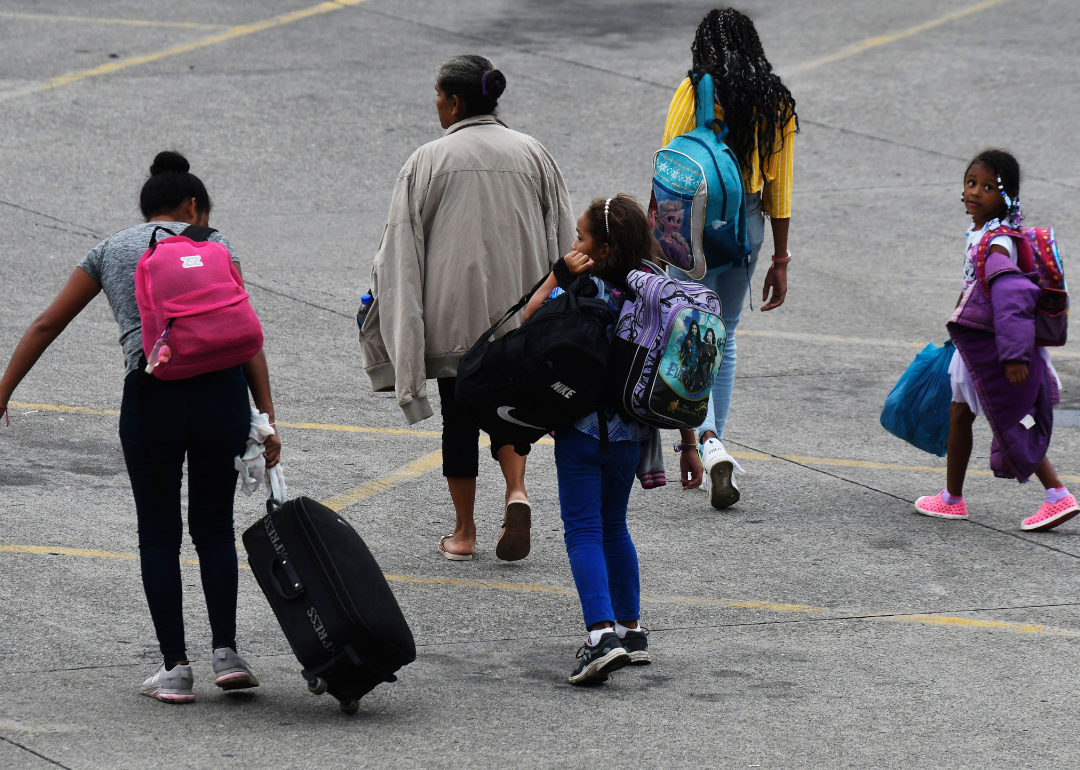
ORLANDO SIERRA // Getty Images
#18. Honduras
A family arriving at the Gran Central Metropolitana bus station, from where the migrant caravan will start its way to the US in San Pedro Sula, Honduras, on October 20, 2022.
– Total refugees accepted since 2017: 852
— 2017: 59
— 2018: 74 (25.4% increase)
— 2019: 91 (23.0% increase)
— 2020: 83 (8.8% decrease)
— 2021: 450 (442.2% increase)
— 2022 (as of November 30): 95
Honduras is one of the poorest and most dangerous countries in the world. With over 50% of its population living in poverty and one of the highest homicide rates in the world, large numbers of Hondurans flee the country each year. About half of all Honduran migrants in the United States over age 25 do not have a high school education. Honduran migrants’ poverty levels are higher than the average of other immigrant groups in the United States. In late 2022, President Xiomara Castro declared a national emergency and suspended constitutional rights in two cities to combat the rising number of extortion cases and violent crime by street gangs like Barrio 18 and MS-13.
NurPhoto // Getty Images
#17. Iran
– Total refugees accepted since 2017: 856
— 2017: 51
— 2018: 199 (290.2% increase)
— 2019: 137 (31.2% decrease)
— 2020: 184 (34.3% increase)
— 2021: 255 (38.6% increase)
— 2022 (as of November 30): 30
Beginning with the installation of an ultra-conservative dictatorship in 1979, human rights violations have been increasing at a rapid pace in Iran. Executions over petty offenses, a crackdown on the freedom of speech, and an extremely strict religious and cultural code of conduct governing culture as a whole have made life unbearable for many in the country. Sanctions put in place by Donald Trump in 2018 did little to help the economic or cultural situation in the country. More recently, the Biden administration has made known its intention to have Iran removed from the U.N. Commission on the Status of Women.
Portland Press Herald // Getty Images
#16. Russia
– Total refugees accepted since 2017: 877
— 2017: 437
— 2018: 184 (57.9% decrease)
— 2019: 188 (2.2% increase)
— 2020: 40 (78.7% decrease)
— 2021: 19 (52.5% decrease)
— 2022 (as of November 30): 9
The number of Russian asylum applicants has been increasing steadily since 2012 when Vladimir Putin was reinstated as president. Up until the February 2022 invasion of Ukraine, Putin’s violent crackdown on dissent and ostracization of the LGBTQ+ community seems to have been the driving force behind the number of citizens leaving the motherland behind. Since the country’s invasion of Ukraine, the exodus of Russian citizens has grown exponentially. Since a military draft was announced by Putin in September 2022 in an effort to grow Russia’s invasion force, an estimated 200,000 people have fled Russia, many going to Kazakhstan, Turkey, Israel, and Dubai.
You may also like: 25 facts about Canadian history and culture
Apu Gomes // Getty Images
#15. Colombia
– Total refugees accepted since 2017: 1,045
— 2017: 128
— 2018: 298 (132.8% increase)
— 2019: 215 (27.9% decrease)
— 2020: 48 (77.7% decrease)
— 2021: 261 (443.8% increase)
— 2022 (as of November 30): 95
Refugees from Colombia constitute the seventh-largest refugee population in the world. Largely driven from their home country by a 40-year-long war ranging between the government, rebel groups, paramilitaries, and narco-traffickers, huge numbers of Colombians are leaving the country each year, even while they open their own borders to refugees from neighboring Venezuela. It seems that the current attitude among the international community towards the crisis in the Latin American country is one of giving up, leaving many to wonder if the U.S. will be accepting more Colombian citizens in the near future. There are an estimated 7.6 million internally displaced persons in Colombia.
ASIF HASSAN // Getty Images
#14. Pakistan
– Total refugees accepted since 2017: 1,060
— 2017: 441
— 2018: 264 (40.1% decrease)
— 2019: 169 (36.0% decrease)
— 2020: 131 (22.5% decrease)
— 2021: 36 (72.5% decrease)
— 2022 (as of November 30): 19
Slow economic development, fragile security, and religious persecution are the primary reasons citizens are emigrating from Pakistan. Malala Yousafzai, one of the country’s most prominent refugees, has done a lot of work to bring attention to this often-overlooked refugee crisis. The largest Pakistani refugee communities in the United States are in New York state, California, and Texas.
Joe Raedle // Getty Images
#13. Ethiopia
– Total refugees accepted since 2017: 1,127
— 2017: 376
— 2018: 247 (34.3% decrease)
— 2019: 116 (53.0% decrease)
— 2020: 72 (37.9% decrease)
— 2021: 252 (250.0% increase)
— 2022 (as of November 30): 64
A political conflict in Ethiopia between the prime minister and the Tigray People’s Liberation Front has led to full-fledged fighting and an increase in violence that is causing a jump in the number of refugees leaving the African country. Massive poverty, a rise in unemployment, religious persecution, and human rights violations are other commonly cited reasons for leaving. The most common destination for Ethiopian refugees is the United States, with particularly high clusters in California, Virginia, Maryland, Minnesota, Texas, and Washington D.C. In December 2022, a cease-fire was negotiated in the two-year civil conflict.
DANIEL MIHAILESCU // Getty Images
#12. Moldova
– Total refugees accepted since 2017: 1,285
— 2017: 207
— 2018: 120 (42.0% decrease)
— 2019: 364 (203.3% increase)
— 2020: 78 (78.6% decrease)
— 2021: 507 (550.0% increase)
— 2022 (as of November 30): 9
Bordered by Romania and Ukraine, Moldova has lost almost one-third of its population since earning its independence in 1991. Many people are leaving the country due to stunted economic viability caused by a lack of decent jobs, but economic upheaval and corruption on a grand scale also play a role in citizens’ decisions to flee. A large number of Moldovan refugees have resettled in New York, which accepted a huge number of citizens from Union of Soviet Socialist Republics countries between 1983 and 2004.
John Moore // Getty Images
#11. Somalia
– Total refugees accepted since 2017: 1,423
— 2017: 316
— 2018: 231 (26.9% decrease)
— 2019: 149 (35.5% decrease)
— 2020: 174 (16.8% increase)
— 2021: 456 (162.1% increase)
— 2022 (as of November 30): 97
Drought and war are the most commonly given reasons behind the uptick of Somalian refugees over the last 30 years. The country in the horn of Africa can be an especially dangerous place for young people, who are often kidnapped by rebel groups that then indenture them as soldiers. The largest concentration of Somali refugees in the United States is in Minnesota, which is now home to some 52,000 people of Somali descent.
You may also like: Popular lunches from around the world
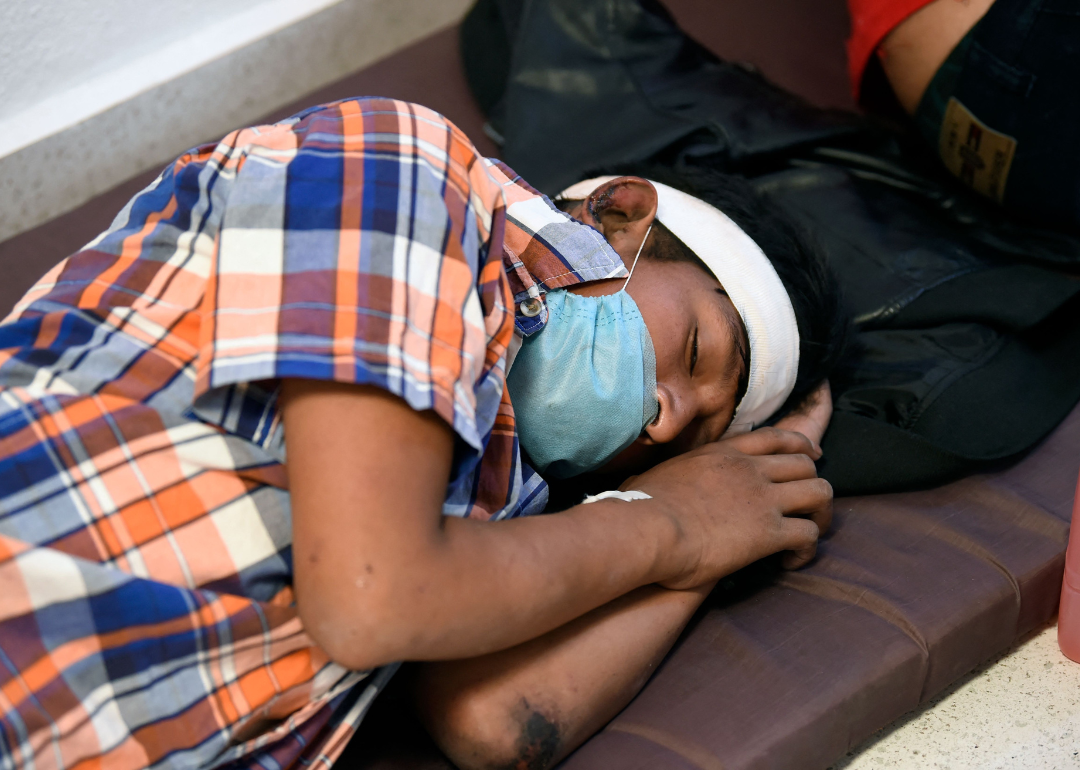
ALFREDO ESTRELLA // Getty Images
#10. Guatemala
A Guatemalan migrant who was injured in a road accident.
– Total refugees accepted since 2017: 1,823
— 2017: 42
— 2018: 118 (181.0% increase)
— 2019: 247 (109.3% increase)
— 2020: 64 (74.1% decrease)
— 2021: 1,085 (1595.3% increase)
— 2022 (as of November 30): 267
Guatemalan migrants have fled the country in large numbers since the 1980s. Many migrants attribute widespread poverty, violence, government corruption, lack of public services, and natural disasters as the main causes for leaving. In 2019, U.S. Customs and Border Protection detained more unaccompanied minors from Guatemala than any other country. The State Department has criticized Guatemalan President Alejandro Giammattei’s administration for committing significant human rights abuses and limiting free speech.
Al Seib // Getty Images
#9. Iraq
– Total refugees accepted since 2017: 2,228
— 2017: 158
— 2018: 465 (194.3% increase)
— 2019: 537 (15.5% increase)
— 2020: 497 (7.4% decrease)
— 2021: 498 (0.2% increase)
— 2022 (as of November 30): 73
Years of war would cause almost anyone to flee home in search of a more peaceful place to raise a family and lead a life. This is certainly the case in Iraq, where violent war, conflict with ISIS, and overall political instability have caused an estimated 3 million people to flee since 2014. Although the U.S. had been in the habit of accepting thousands of refugees from the country, particularly those who helped assist in the 2003 invasion, President Trump’s strict immigration policies have kept many in limbo for years. Under the Biden administration, the situation does not look to be improving—in May 2022, the White House filed a motion to be relieved of the federal government’s obligation to process long-delayed applications from Afghans and Iraqis seeking a special immigrant visas for assisting the United States in their home countries.
Robert Nickelsberg // Getty Images
#8. Bhutan
– Total refugees accepted since 2017: 2,288
— 2017: 2,228
— 2018: 32 (98.6% decrease)
— 2019: 7 (78.1% decrease)
— 2020: 1 (85.7% decrease)
— 2021: 14 (1300.0% increase)
— 2022 (as of November 30): 6
In the 1980s, the government in Bhutan adopted a “One Nation, One People” policy, essentially banning ethnic Nepalis in favor of the majority Drukpa. Since then, nearly 100,000 Bhutanese refugees have been resettled in the United States, fleeing violence and political unrest in their home country. The largest Buhtanese communities can be found in New York, Texas, Indiana, North Carolina, and Georgia.
ED JONES // Getty Images
#7. El Salvador
– Total refugees accepted since 2017: 2,314
— 2017: 725
— 2018: 311 (57.1% decrease)
— 2019: 365 (17.4% increase)
— 2020: 200 (45.2% decrease)
— 2021: 519 (159.5% increase)
— 2022 (as of November 30): 194
Growing rates of violence, particularly gender-based violence, are believed to be behind the jump in the number of individuals fleeing El Salvador and requesting refuge in the United States. Rising poverty levels, corrupt governments, climate change, and a global pandemic are other factors driving the increase in refugees from this Latin American country. As of 2010, more than 50% of El Salvadoran refugees lived in California and Texas. Salvadorans comprise the second largest group of unauthorized Latin American migrants in the U.S., as well as the second largest group of Latin American DACA recipients.
Andy Cross // Getty Images
#6. Eritrea
– Total refugees accepted since 2017: 4,096
— 2017: 1,269
— 2018: 1,757 (38.5% increase)
— 2019: 475 (73.0% decrease)
— 2020: 184 (61.3% decrease)
— 2021: 325 (76.6% increase)
— 2022 (as of November 30): 86
A small country on the Red Sea, Eritrea is bordered by Sudan, Ethiopia, and Djibouti. Many of the refugees that flee to America and other western countries are running from the totalitarian government that has held power for 25 years, torturing its people, controlling individual movements and resources, and mandating military service, among other human rights violations. The U.S. made headlines around the world when it deported nearly 1,000 Eritreans, sending them back to near-certain death in the country that has been dubbed “the North Korea of Africa.”
You may also like: 25 facts about Mexican history and culture
JAVED TANVEER // Getty Images
#5. Afghanistan
– Total refugees accepted since 2017: 5,638
— 2017: 806
— 2018: 1,198 (48.6% increase)
— 2019: 604 (49.6% decrease)
— 2020: 872 (44.4% increase)
— 2021: 1,618 (85.6% increase)
— 2022 (as of November 30): 540
In an ironic twist of fate, the United States has had a hand in creating the crisis in Afghanistan that has driven out upwards of 2 million refugees. Political unrest, as well as the violence and intolerance that comes with it, are forcing people to look elsewhere for a safe and stable life. Taliban rule has further exacerbated internal displacement as well as the number of refugees seeing asylum elsewhere. In the United States, Fremont, California is home to the largest population of Afghani refugees in the country.
Andrew Renneisen// Getty Images
#4. Syria
– Total refugees accepted since 2017: 7,391
— 2017: 76
— 2018: 563 (640.8% increase)
— 2019: 481 (14.6% decrease)
— 2020: 1,246 (159.0% increase)
— 2021: 4,556 (265.7% increase)
— 2022 (as of November 30): 469
According to World Vision, the Syrian refugee crisis is the largest refugee and displacement crisis of our time. Thanks to a civil war that began in 2011, millions of people have fled the country while millions more have been internally displaced. During the Trump administration, the number of refugees the United States accepted from this Middle Eastern country was cut dramatically, thanks to largely unfounded fears that the program was being exploited in order to funnel terrorists into the U.S. Recently, a Syrian refugee camp was infiltrated by ISIS for the purpose of recruiting to its cause; the Biden administration has taken a stance to aid in the repatriation of refugees from the camp.
DMITRY SEREBRYAKOV // Getty Images
#3. Ukraine
– Total refugees accepted since 2017: 11,725
— 2017: 2,635
— 2018: 4,451 (68.9% increase)
— 2019: 1,927 (56.7% decrease)
— 2020: 803 (58.3% decrease)
— 2021: 1,610 (100.5% increase)
— 2022 (as of November 30): 299
Russia’s invasion of Ukraine in February 2022 and the ongoing war of resistance among the Ukrainian people has had a profound effect on those seeking refuge. The U.S. agreed to protections for approximately 180,000 Ukrainians since the war began, of which 100,000 were admitted in the first five months post-invasion. Most were admitted through one of various temporary or time-restricted programs rather than the standard refugee process. A website has been established to help Ukrainian refugees connect with family, friends, and potential sponsors in the U.S. In December, the U.S. Citizenship and Immigration Services published a report indicating that 82,000 Ukrainians and their immediate family members within U.S. borders were granted “parole,” allowing them to stay in the U.S. for at least two years in light of the uncertain end to Russian aggression.
Ricardo DeAratanha // Getty Images
#2. Myanmar
– Total refugees accepted since 2017: 14,114
— 2017: 3,557
— 2018: 4,932 (38.7% increase)
— 2019: 2,115 (57.1% decrease)
— 2020: 772 (63.5% decrease)
— 2021: 2,156 (179.3% increase)
— 2022 (as of November 30): 582
In 2017, The World reported that over the previous 10 years, an estimated 1 in every 4 U.S.-bound refugees had been from Myanmar (also known as Burma). People are leaving the country en masse due to religious and ethnic persecution as well as high levels of violence. A military coup in February 2021 made an already dire human rights situation even worse, resulting in the extermination of more than 1,000 people and the systemic crushing of public dissent via police and military action. By and large, Burmese citizens settle in the South upon arrival in the United States, though the Midwest is another popular region.
Boston Globe // Getty Images
#1. Democratic Republic of the Congo
– Total refugees accepted since 2017: 37,442
— 2017: 7,883
— 2018: 12,958 (64.4% increase)
— 2019: 2,868 (77.9% decrease)
— 2020: 4,891 (70.5% increase)
— 2021: 7,810 (59.7% increase)
— 2022 (as of November 30): 1,032
One of the most complex societal and political situations in the world, the Democratic Republic of the Congo has been dealing with various civil wars and pockets of violence since 2003. The continuous fighting and violence, as well as the human rights violations that accompany it, have forced many to flee their country, in search of a better life in the U.S. and other stable nations. Most DRC refugees have settled in New York, Texas, Arizona, Kentucky, and Colorado, while a few others have been resettled in states like North Carolina. The UNHCR estimates that there are more than 920,000 DCR refugees and asylum seekers scattered across the globe.
You may also like: The richest royals in the world
